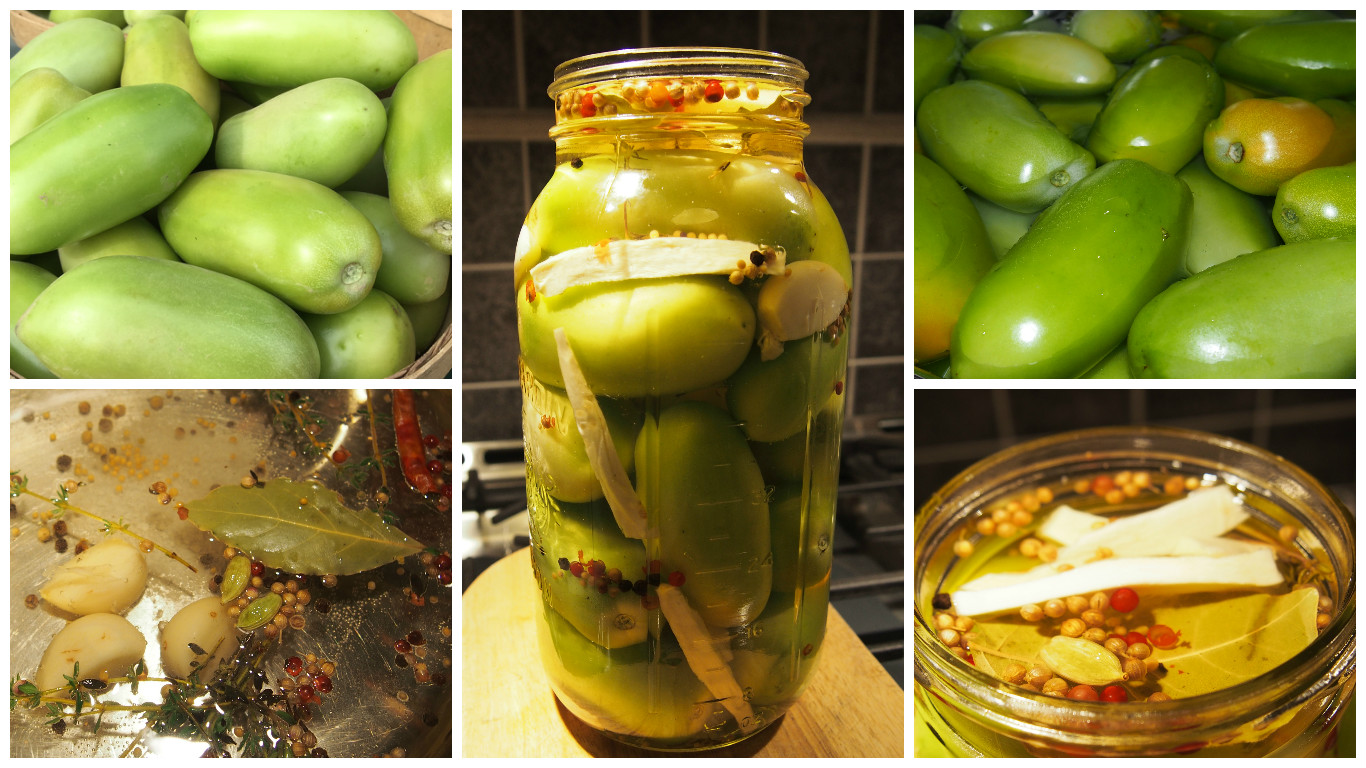
Pickling vegetables has always been a great way to preserve in-season vegetables to enjoy with stews, in sandwiches, on salads, or as an addition to cold cut appetizers. With fall in full bloom there are plenty of vegetables or fruit to pickle. Not that fall is the only time to pickle vegetables, pickling is an activity that you can take part in all the time, it just comes down to getting creative with which vegetables you want to pickle.
Some East European cultures pickle watermelon and mushrooms (note: I have never seen them pickled together but who knows, maybe they could taste delicious together!). Now I have never tried pickled watermelon, but the idea of pickled watermelon opens up the door to the infinite possibilities that exist with pickling. Depending on the fruit or vegetable you are pickling you can produce a wide variety of results from different tastes to textures. For examples, pickled cucumbers have a very different taste and texture from pickled peppers - the peppers are sweeter and not as crunchy. Small batches of pickled vegetables or fruits can be made to discover your favourite pickle that fits with the meals you make.
This recipe is for green tomatoes (which are in fact fruit), but you can replace the green tomatoes with any vegetables or fruit. All you have to do is use the same pickling solution - I love this picking solution, I can eat it with a spoon.
Pickled Green Tomatoes
Makes 2 liter sealed jar, 1 hour to make, 2 days to rest and 1 month to pickle
3 kg Green Tomatoes
Horseradish (about the size of a tomato)
1 cup white vinegar (7% pickling vinegar)
3 cups water
3 garlic cloves
2 tablespoons salt (pickling salt)
1 tablespoon sugar
2 cardamom pods
2 bay leaves (dried)
1 dried chilli pepper
1 teaspoon coriander seeds
2 springs of thyme (fresh)
1 2 liter jar with lid
Wash the green tomatoes with plenty of water, and place them in a colander. Peel the horseradish and cut the horseradish into sticks (about the size of french fries). Begin to stack the tomatoes in the jar with the horseradish sticks in-between. The way to stack the tomatoes comes down to how you think is best - either perpendicular or horizontal to the bottom of the jar.
Once the tomatoes have been stacked, you should begin to create the pickling solution. Add the vinegar, water, garlic, salt, sugar, cardamom, bay leaves, chilli pepper, coriander and thyme in a pot. Turn the heat to medium high and bring the solution to boil. As soon as the solution starts to boil remove from heat and remove the thyme and chilli pepper. If you enjoy the taste of cardamom leave the pods in the mixture, but if you do not like the taste remove the cardamom as well.
Pour the mixture on top of the tomatoes, make sure the garlic ends up in the jar - the garlic is very tasty pickled. Cover the tomatoes to the top with the mixture, if there is not enough mixture make some more. Cover the tomatoes with a small plate and leave them on the counter for 2 days. After the two days seal the jars and place them in a dark cool place. The tomatoes should be pickled after 1 month.
Next time you decide to pickle try experimenting with a new vegetable or fruit, you never know what you will create! Click here to find a farm that sells tomatoes near you - the green tomatoes are in-season now since unless there’s a greenhouse near your farm, tomatoes won’t turn red and sweet in this weather.
– Andreea Nicoara





